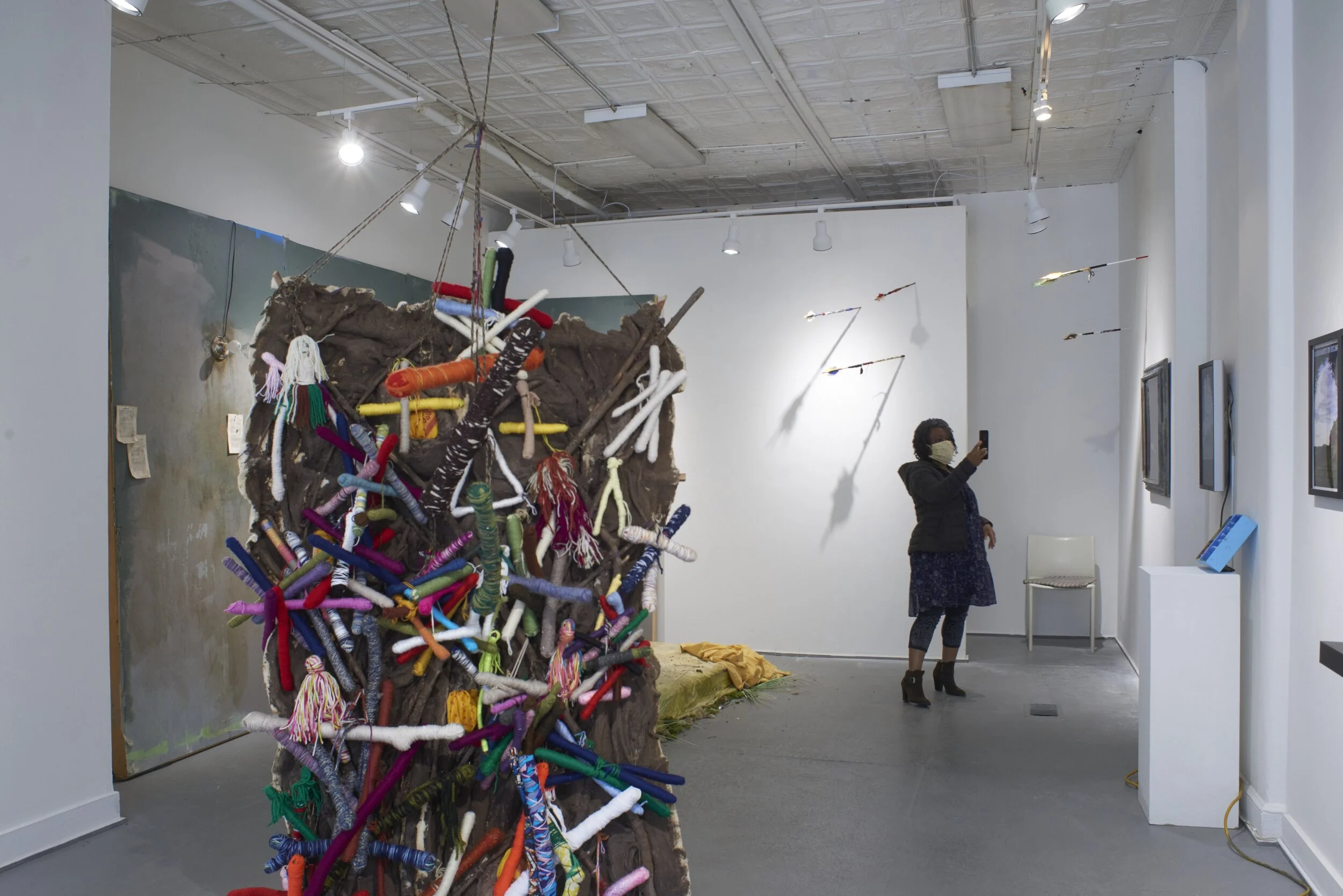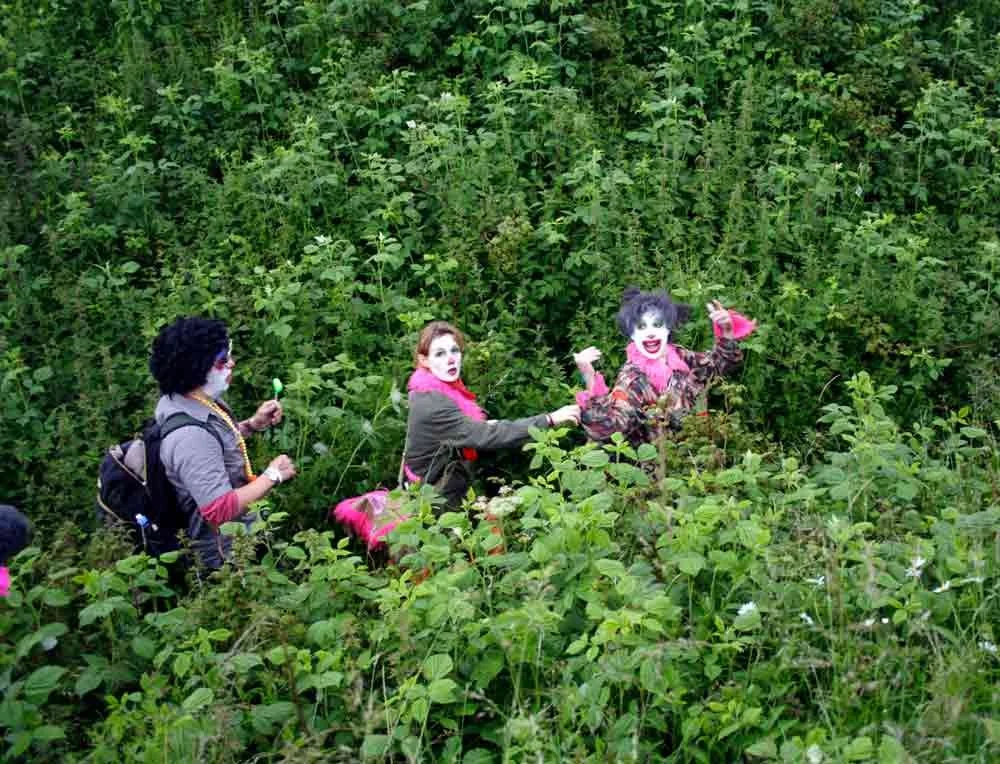Klaus Speidel, theorist, critic and curator, is intent on rehabilitating the term “commissaire” in French, “commissioner” in English; while France’s contemporary art world prefers that of “curateur”, derived from English “curator”. But the connotations in French aren’t the same as in English. The author’s position isn’t just a matter of words: his etymological inquiry finds an extension in his practise of the exhibition.
Originally published in art press
At first I felt only a vague embarrassment at hearing the term “curateur” in French. I saw in it a slightly awkward, poorly disguised Anglicism. Nothing more. When I became aware of the etymological justification for preferring this term to the traditional term of “commissaire”, my discomfort only increased, but I still didn’t feel the need to act. After all, was I perhaps just being inappropriately sensitive as a foreigner? But when I read Qu’est-ce que le Curating ?, [What is Curating?], a “manifesto-conversation” among Élie During, Donatien Grau, Hans-Ulrich Obrist and Dominique Gonzalez-Foerster (1), to prepare a performance conference at the Tanneries d’Amilly on the positions of the commissaire (2), I felt the need to explore the question further: the level of reflection on the opposition between “curateur” and “commissaire” was radically different from the subtle observations What is Curating? featured. So I began research that leads me today to engage in a battle of words, a battle that Jerome Glicenstein rejects from the outset in the L’Invention du Curateur. Mutations dans L’Art Contemporain (3) while taking the side, right from the title of his book, of the camp of “pro-curating”, to which the authors of Qu’est-ce que le Curating? also belong.
AUTHORITY VS BENEVOLENCE?
The latter, indeed, relentlessly remind us of the superiority of the term “curateur” and the associated lexical field. Donatien Grau begins by explaining that “commissaire d’exposition” sounds like “policing” [commissairemeans superintendent or chief of police in French] and that “conservateur” would be “unsuitable”. Élie During says “we don’t really want to use the word ‘commissaire’ anymore. As if its authoritarian and even police connotation had become unbearable.” Finally, Hans-Ulrich Obrist rubs this in by suggesting that, “‘commissaire’, which comes from police vocabulary, is the idea of authority, the idea of a top-down master plan, which leaves no room for self-organization”. “Curateur”, derived from the Latin curare, to take care of something, evokes on the contrary benevolence, the idea of taking care of art. The reasoning is quite simple, thriving in gallery conversations where etymology isn’t usually discussed. But does it stand up?
Though it is relatively common to interrupt etymological research when a Latin verb, as here, is chosen, this choice isn’t obvious. After all, the story of words is essentially a series of eras and it would always be possible to stop at other times. Presented as if they were neutral and objective, etymological observations are generally part of a very precise argumentative strategy. As shown in Eric Hazan’s book LQR. La Propagande du Quotidien [LQR. The Propaganda of the Everyday] (4), a book in which Hazan demonstrates how a certain official vocabulary obscures the reality of social facts, the replacement of one word by another often has ideological implications. Replacing “commissaire” with “curateur” is a bit like replacing “bosses” with “social partners” to conceal the reality of the distribution of power. I believe that the etymology of curare has hit the jackpot in the current context because it removes the suspicion of a subjugation of art by commissaires/curateurs. In reality, it is a way of avoiding the question of curatelle [curatorship /protection of vulnerable adults] rather than responding to it. But how to challenge the etymology? The answer is simple: with counter-etymology, but in earnest.
Let us first note that a comparison between, on the one hand, the present connotations of a term in French (commissaire) and, on the other hand, the Latin origin of its synonym (curateur), poses a methodological problem. We can compare present meanings with historical meanings, but there is no point in mixing the two.
What there is to say about the current meaning is easy to say: if commissaire sounds like “policing”, curateur sounds like “curatorship”, or “protection of vulnerable adults”. For, in the first sense in French, the term curatellerefers to a “person who administers the property of an adult declared incapable of doing so themselves” or someone “who administers a vacant estate or an abandoned thing”. Difficult to find worse if the goal is to avoid the idea of authority and a top-down approach, because a transfer to art can only but bring to mind artists unable to speak for themselves and orphaned works. But let’s compare the etymologies. For “curateur”, everything has been said; for “commissaire”, things are more complex.
The term comes from the Latin substantive commisarius, which was derived in the Middle Ages from commissus, past participle of the verb commito. Now, with commito, verb from which our “commissaire” is derived, as curare is at the origin of “curateur”, a whole mine of meanings opens up to us.
First, the term means to unite, join, assemble and connect. A proven use is “Tiberium ponte commitere”, to throw a bridge across the Tiber. Far from simply gathering a series of things, actions or people, commissairesconnect them. This point of view resonates with a statement by Elie During: “The practice of curating changes things in depth because it works from the outset in the conjunctive dimension of the works”. An important aspect of curating is thus included in the term “commissaire”. As for the nature of relationships, it can be multiple and established between media, past and present, cultures and fields of activity, or between communities that aren’t used to interacting. So a commissaire would be someone who creates a link where there hadn’t been previously. This also echoes a definition of Puerto Rican commissaire Mari Carmen Ramírez, who suggests seeing her activity as an act of “mediating, negotiating and translating between public, private, entrepreneurial and symbolic worlds” (5).
Ideally exchanges – even symbolic ones – aren’t purely conceptual, but become discernible in space. When an exhibition visit proceeds only work by work, the main part of the commissariat is lost. In Zeig Mir Deine Wunde [Show Me Your Wounds] at the Dom Museum in Vienna in 2018, Johanna Schwanberg and I therefore worked particularly on the relations between the works.
In one place, Anders Krisár’s Bomb Suit (2007) was caught between an extract from Raphael Dallaporta’s series Antipersonnel (2004) and a wooden crown of thorns from the late 19th century, opposite a crucifixion, also from the 19th century. The exhibition created links across the centuries between secular and sacred art: the mines, which appear in Dallaporta’s work as small jewels of engineering, contrasting with the heavy clothes used to protect from explosions, and emphasizing the sophistication of a crown of thorns found in a monastery, the technical appearance of which suddenly seemed to anticipate barbed wire; the massiveness of the anti-bomb suit emphasized the fragility of the human body in the crucifixion and vice versa.
Elsewhere, a Saint Sebastian by Louise Bourgeois met a Baroque Saint Sebastian by Giovanni Giuliani. The passivity of the androgynous saint accentuated the activity and the markedly feminine power of the figure conceived by Bourgeois. Faced with the realism of the arrows penetrating the body of the saint in the traditional representations that surrounded it, the degree of abstraction of the arrows drawn by Bourgeois became salient and emphasized their allegorical aspect.
It is moments like these that made me turn to this profession, because, compared to arrangement in space, text is a very poor medium. In order for works created independently of one another to be mutually illuminating, we have to do more than “take care” of art. It is necessary to look for unexpected and unforeseen echoes between works, and to take responsibility as a commissaire for favouring one meaning over another.
A COMBAT SPORT
A commissaire therefore creates meaning by creating relationships, whether by highlighting affinities or differences. But that’s not all. Other meanings of commitere are “undertake” or “get started”, for example in “getting into the fight”. What could be more relevant for commissaires or critics who today like to talk about “defending the work of an artist”, as Zola defended Manet, and who go so far as to say that “art is a combat sport “? It’s more than a metaphor, I felt it myself when Caroline Bourgeois, commissaire and consultant for the collector François Pinault, said, “You’re dead in the art world. I’ll take care of it!” at the end of a dinner where, as a young critic, she first attacked me because I was sporting a beard – “whoever wears a beard is hiding “ – and was then upset because to prefer Kader Attia to Adel Abdessemed was “too easy” and that I was generally sceptical of an art critic who knows in advance what she likes. But if committere also means “to commit”, a meaning still present in the English terms “commit” and “commitment”, she was right about commissaires. The etymology of “criticism” (from the Greek kritikos and krinein) referring to notions of discernment, judgment and choice, a commissaire would be someone committed to ideas and artists (6). And if “in senatum committere” means “to risk going to the Senate”, the commissaire would take the risk of a public action. Indeed, according to Elie During, “if things go wrong, it is to them that we turn, it is on them that the discontent of artists and critics is focused.” Exhibiting the work of others, commissaires are also exposing themselves. They “commit” at the risk of self-compromise – in the age of gender and identity politics, this is truer than ever.
Finally, commito is also used in the sense of “confide”. “Committere alicui ut …” means “Entrusting to someone the care (or mission) of …” and “suam salutem amico committere” means “putting one’s well-being in the hands of the friend”. We then again find the idea of care that first made “curating” an attractive term.
But instead of veiling the danger of a subjection of art by commissaires by talking about care – as if etymology changed behaviour – is it not better to keep a term that reminds us of the risk? Dialogue, co-commissariat and co-writing with artists can then be strategies of response. I recently experimented with a fourth approach: the weakening of the story of the exhibition. For the exhibition Fragile Narratives (2019) at the Kunstraum Memphis in Linz, I offered three different exhibitions of the same works, which I contextualized and explained differently in each text. One exhibition evoked the constitution of identities by stories, a second artistic research and a third the stories that are hidden in everyday objects. And if there are three possible interpretations, there are four, five, fifty … Instead of rejecting the responsibility and authority of the commissaires, let’s take acknowledge them to the point of absurdity. By assigning multiple meanings to the same works, we weaken our own exhibition narratives. Let’s be present for dialogues, visits and critical exchanges. Let’s question our convictions and our positions of authority while defending them in a benevolent, considerate way.
In short, the present associations of the term “commissaire” should – as much as its history – lead us to preserve it. Because, apart from the idea of care, “commissaire” refers to building bridges, undertaking, taking risks, engaging with and committing to. The negative injunction of the title of this text has its positive complement: “Call me ‘commissaire’”. At least in French because, in German, I have no choice. I must be content to be a simple Kurator.
Translation: Chloé Baker
(1) Élie During, Dominique Gonzalez-Foerster, Grau Donation, Hans Ulrich Obrist, Qu’est-ce que le curating ?[What is Curating?], Manuella Editions, 2011.
(2) Klaus Speidel, Fragile Curating, a performance-lecture given at the invitation of Éric Degoutte, Les Tanneries contemporary art centre, Amilly, June 22, 2019.
(3) Jerome Glicenstein, L’Invention du Curateur, Mutations dans L’ Art Contemporain [The Invention of the Curateur, Mutations in Contemporary Art], PuF, 2015.
(4) Éric Hazan, LQR. La Propagande du Quotidien, Raisons d’Agir [LQR. The Progaganda of Everyday Life, Reasons to act], 2006.
(5) Quoted by Jerome Glicenstein, L’Invention du Curateur [The Invention of the Curateur], op. cit.
(6) I opened the presentation that won me the AICA France Prize for Art Criticism on March 20, 2015 with this autobiographical anecdote and my vision of art criticism. Intervention viewable on: https://vimeo.com/124914323.
Klaus Speidel is a doctor of philosophy, art and image theoretician, art critic and independent curator /commissaire.


















































